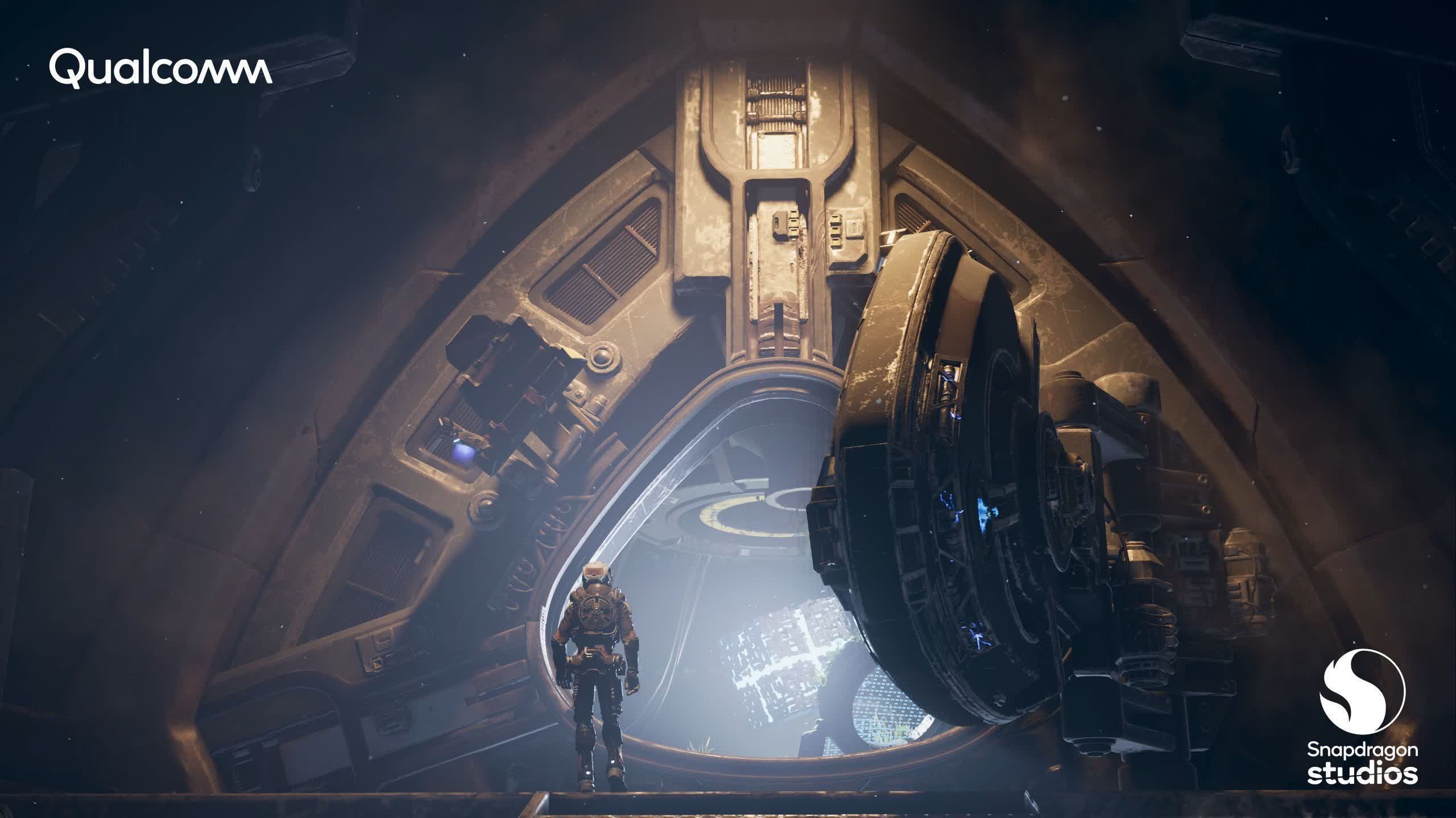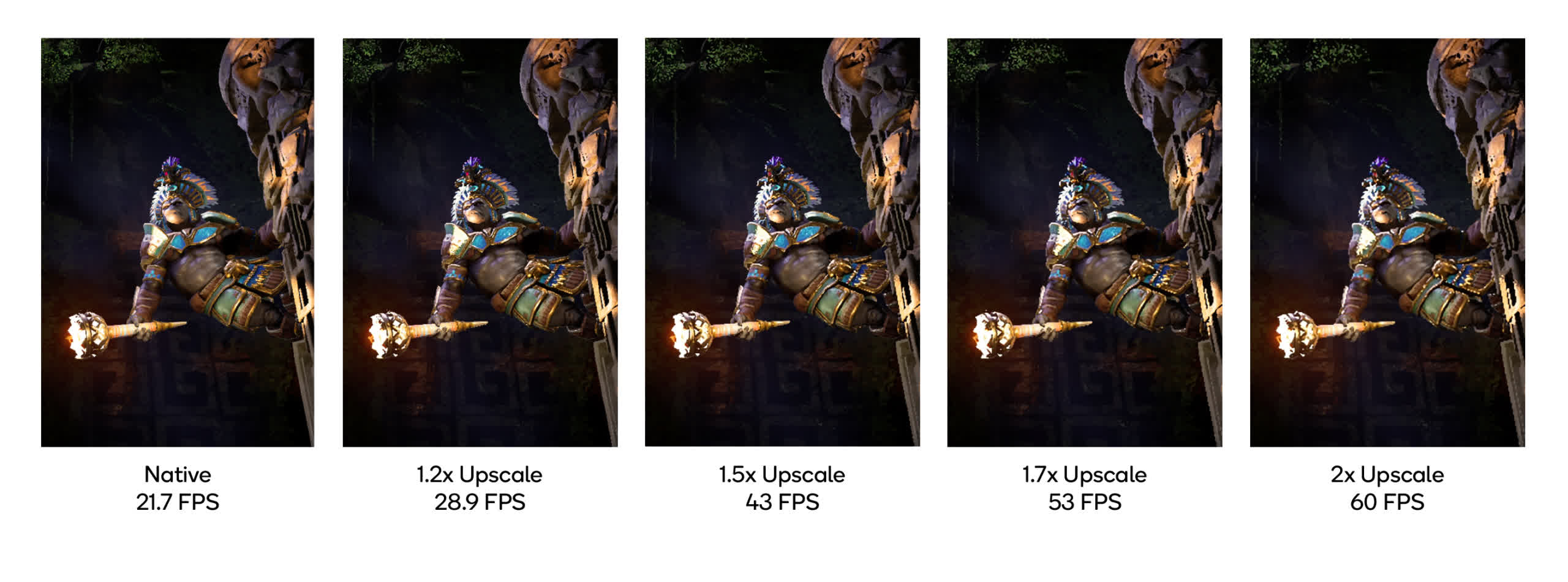Why it matters: Qualcomm's latest hardware includes features commonly associated with the latest PC graphics cards, like real-time ray tracing. Another recently popular function – resolution upscaling – is now coming to the Snapdragon platform to improve performance and battery life in graphically intense mobile games.
Qualcomm introduced Snapdragon Game Super Resolution (GSR) this week – an upscaling solution that increases performance and battery life in mobile and expanded-reality games. The company compares the method to PC and console game processes like AMD's FSR, Nvidia's DLSS, and Intel's XeSS.
Upscaling techniques from AMD, Nvidia, and Intel save horsepower by supersampling game resolution rather than running them natively at higher resolutions. While AMD's spatial FSR 1.0 and temporal FSR 2.0 are platform agnostic, the machine learning alternatives DLSS and XeSS require AI hardware from Nvidia and Intel GPUs, respectively. Qualcomm says its upscaling system supports most GPUs but contains optimizations that make it work best on Snapdragon's Adreno GPU, making it semi-agnostic.
Qualcomm's GSR is a single-pass spatially aware technique with the same goal as the other upscaling methods. The company claims the technology improves performance and lowers energy consumption, thus improving battery life.
The company compares the results to FSR and DLSS 1080p and 4K performance mode, showcasing screenshots with a 2x resolution upscale. One demo upscaled from 540p to 1080p and another from 1080p to 4K. Qualcomm also claims GSR can make the difference between 30fps and 60fps, a performance increase similar to what analyses show for FSR and DLSS performance modes.
Snapdragon GSR's single pass incorporates edge sharpening and upscaling using range-aware dynamic scaling. It can then combine with additional post-processing passes, like tone mapping, to improve performance. Game Super Resolution's 12-kernel window only performs luminance calculation in the green color channel, to which human eyes are most sensitive.
The list of GSR-supported titles includes Call of Duty Mobile, Farming Simulator 23 Mobile, Jade Dynasty: New Fantasy, Return to Empire, Justice Mobile, and Naraka Mobile.
Qualcomm unveiled the Snapdragon 8 Gen 2 platform late last year. It supports the latest APIs and features like Vulkan 1.3, OpenGL ES 3.2, OpenCL 2.0 FP, Unreal Engine 5, and real-time ray tracing. In February, the company demonstrated the SoC's ability by running Stable Diffusion locally.

